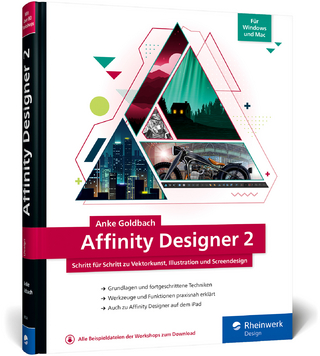
Architecture's New Strangeness
A 21st Century Cult of Peculiarity
Seiten
2022
Oro Editions (Verlag)
978-1-951541-72-9 (ISBN)
Oro Editions (Verlag)
978-1-951541-72-9 (ISBN)
The book is a systematic critique, sometimes acerbic, of some 21st century trends in architectural design, trends that have become assertively extreme (or indefensibly peculiar) in their approaches to form.
This book arose from two observations: that building design in the first decades of the 21st century accepts and pursues some increasingly odd and disturbing trends; and that there seems to be insufficient architectural criticism that calls these trends to account. Several factors appear to be behind these trends. Remarkable advances in the power of computer programming, permitting the simulation, manipulation and documentation of complex and continuously varying surfaces and volumes are surely one factor, opening the door to design opportunities that are unprecedented and have thus not stood the test of time. Another powerful factor would be the combination of wealth polarisation and the growing influence in the modern world of authoritarian regimes. The latter have the power to unilaterally call for huge projects of untested design merits. Also the proliferation of the ultra-rich in the modern world - oligarchs, sheiks, emperors of tech - has likewise facilitated the proliferation of often bizarre architecture that serves ego far more than the marketplace.
An analysis of such factors is not, however, the main mission of the book. Rather, the mission was to take up that seemingly neglected role of architectural critic with respect to these trends of concern and a selection of some specific exemplars. An early decision was to not include the project type of single-family housing, it being such easy prey - whether developer-bland, mcmansion-hell or all-white-minimal - that it appeared a bit unseemly to complain about it. Thus the book’s subjects come primarily from the worlds of commercial and institutional architecture. In short order the apparent chaos of oddities that my research assembled fell into the taxonomy that is the structure of the book, its main headings being Obscuration, Fragmentation, Deformation, and Degradation. Subheadings within these main topics feature critiques of individual works, supplemented with 120 hand-drawn illustrations. The book takes a somewhat acerbic tone, to distance the narrative from the rather serious and high-minded approach to written material that the subject seems prey to.
This book arose from two observations: that building design in the first decades of the 21st century accepts and pursues some increasingly odd and disturbing trends; and that there seems to be insufficient architectural criticism that calls these trends to account. Several factors appear to be behind these trends. Remarkable advances in the power of computer programming, permitting the simulation, manipulation and documentation of complex and continuously varying surfaces and volumes are surely one factor, opening the door to design opportunities that are unprecedented and have thus not stood the test of time. Another powerful factor would be the combination of wealth polarisation and the growing influence in the modern world of authoritarian regimes. The latter have the power to unilaterally call for huge projects of untested design merits. Also the proliferation of the ultra-rich in the modern world - oligarchs, sheiks, emperors of tech - has likewise facilitated the proliferation of often bizarre architecture that serves ego far more than the marketplace.
An analysis of such factors is not, however, the main mission of the book. Rather, the mission was to take up that seemingly neglected role of architectural critic with respect to these trends of concern and a selection of some specific exemplars. An early decision was to not include the project type of single-family housing, it being such easy prey - whether developer-bland, mcmansion-hell or all-white-minimal - that it appeared a bit unseemly to complain about it. Thus the book’s subjects come primarily from the worlds of commercial and institutional architecture. In short order the apparent chaos of oddities that my research assembled fell into the taxonomy that is the structure of the book, its main headings being Obscuration, Fragmentation, Deformation, and Degradation. Subheadings within these main topics feature critiques of individual works, supplemented with 120 hand-drawn illustrations. The book takes a somewhat acerbic tone, to distance the narrative from the rather serious and high-minded approach to written material that the subject seems prey to.
Following a year abroad as a Paris Prize recipient and interning with The Architects Collaborative, Kenneth Moffett co-founded of the award-winning Tennessee architecture firm BullockSmith, where he has spent a career as Design Director.
| Erscheinungsdatum | 05.03.2022 |
|---|---|
| Zusatzinfo | 120 Illustrations, black and white |
| Verlagsort | San Rafael |
| Sprache | englisch |
| Maße | 216 x 279 mm |
| Gewicht | 495 g |
| Themenwelt | Mathematik / Informatik ► Informatik ► Grafik / Design |
| Technik ► Architektur | |
| ISBN-10 | 1-951541-72-3 / 1951541723 |
| ISBN-13 | 978-1-951541-72-9 / 9781951541729 |
| Zustand | Neuware |
| Haben Sie eine Frage zum Produkt? |
Mehr entdecken
aus dem Bereich
aus dem Bereich
Schritt für Schritt zu Vektorkunst, Illustration und Screendesign
Buch | Hardcover (2023)
Rheinwerk (Verlag)
39,90 €
Fit für Studium und Ausbildung
Buch | Softcover (2022)
Rheinwerk (Verlag)
24,90 €


